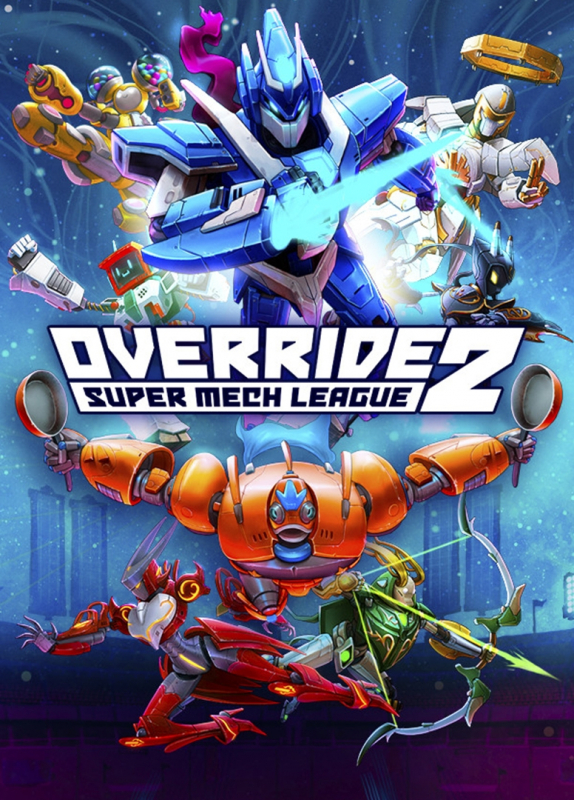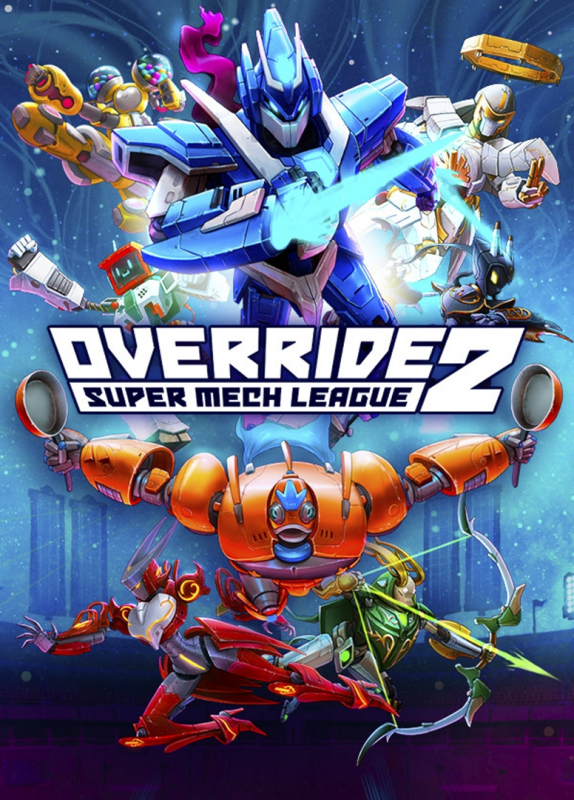
Override 2: Super Mech League (PC) - Review
by Daniel Parker , posted on 24 January 2021 / 4,034 ViewsOn its surface, Override 2: Super Mech League looks like a great game, thanks to strong visuals and sound design. However, once you delve into it, you'll begin to see serious issues with the game's core fighting systems, such as a lack of viable close range attack options and a limited number of game modes, all of which really hurt the game's potential longevity.
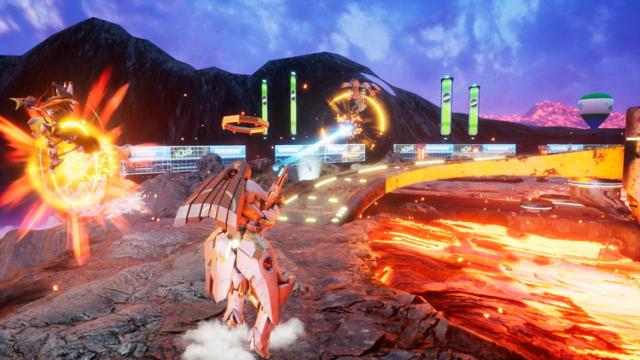
Each of the game's characters and arenas looks great. Colors pop and each environment is so detailed that it's impossible to choose a favorite. The mechs are equally strong, with characters boasting unique, original designs and animations that blend together nicely, ensuring that Override 2 is a fantastic looking game. Solid music and sound design complement the visuals as well. Admittedly, though, if any theme from the game is going to get stuck in your head, it'll be the one you hear on the main menu screen. This is because the sounds of giant mechs brawling and destroying themselves and the environment around them drown out the stage's themes.
That's not necessarily a bad thing though, as the sound design helps to make each attack feel impactful, and Override 2 certainly does a good job of conveying the power behind each attack. Many attacks have insane start-up times, ranging from a quarter of a second to half a second, so for the most part you're just going to spam your fastest attack and whatever two or three-hit combo your mech can string together from it. Add in recovery animations, which are all much longer than most other fighting games, and you're left with combat that feels slow and limited. It also goes against all fighting game logic to ever use attacks with high start-up times in the face of quick opponents. And after testing a few different characters it seems there aren't any attacks that are 'safe on the block' - even ones with long start-up animations - so there's not much reason to ever use them. Slow start-up makes them easy to react to and long recovery times mean your opponent is free to do whatever they please.
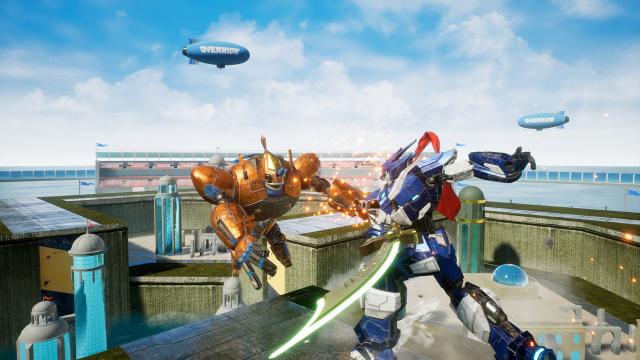
Each of the four shoulder buttons is mapped to a limb, similarly to Tekken. However, light attacks are always mapped to the left side and heavy attacks are always mapped to the character's right ride. This set-up doesn't really work well for Override 2, simply because the game doesn't take advantage of it. There are no significant attack strings that justify the need for four attack buttons. Most characters have a two-hit combo, and these strings could have been assigned to a single punch or kick button, because pressing the same limb doesn't give you a different attack. You have just eight basic attacks in the air and standing in total, and no rising or grounded attacks, as you would have in other 3D fighters. Every character should have had at least one button dedicated to a particular attack string and maybe even a more expanded movelist of basic attacks to allow for a more player-involved custom combo system.
That isn't to say all characters need to have bloated movelists like in Tekken, but even just 20 different attacks per character (not including specials) would have been welcome here. As it is, other arena fighters feel better than Override 2 because there's usually a button dedicated to punching and kicking; pressing them in succession gives you an attack string and the game usually tells you how big your combo is, so you know to back off if you mistime an input, however a combo indicator of any kind is completely missing from this game, and it can be hard to tell if you've done a combo or just counter-hit an opponent who was simply mashing buttons.
There are also ultimate attacks in Override 2, but they require you to stand in a designated spot in the arena and build a meter to use them. Even if you are able to pull this off successfully it doesn't deal enough damage to make the attack feel satisfying.
There is one thing Override 2 does manage to get right in terms of gameplay, however: each of the special moves has universal input commands across the entire roster, which wouldn't be ideal for every fighting game, but not having to remember different button commands for each character is a clear positive in this case. It would have been nice if that simplicity had allowed the game to have added depth in other areas, but that's not the case.
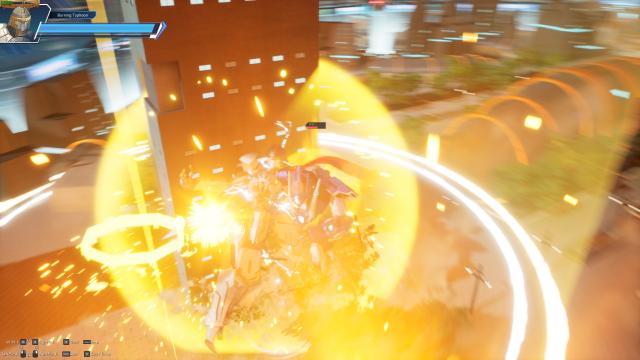
In terms of modes, as mentioned earlier, there's not much variety on offer. There's no survival mode, time attack, or arcade. You do, however, have access to online and versus modes (the latter requiring two controllers, as there doesn't seem to be an option to allow for one player to play on the keyboard and the other on a controller). There's also a training mode that allows you to set the AI to block after being hit, which is useful for testing out the few combos each character has available to them, but nothing robust, like being able to set AI-controlled actions or its starting position on the map. This means that testing/practicing against specific strategies is difficult unless you get a second person to control the training dummy.
Override 2's premier game mode is a story mode, which mostly consists of a monologue from your agent, Zoe, who seems to be the real main character given her prominence. Although the character of Zoe is portrayed nicely, interactions with her consist of nothing more than a text box and picture. There's no background art, and the picture used is always the same. Furthermore, Zoe is the only one who ever speaks. All of this takes place overlaying the Garage, which is also the backdrop of the game's main menu and character selection.
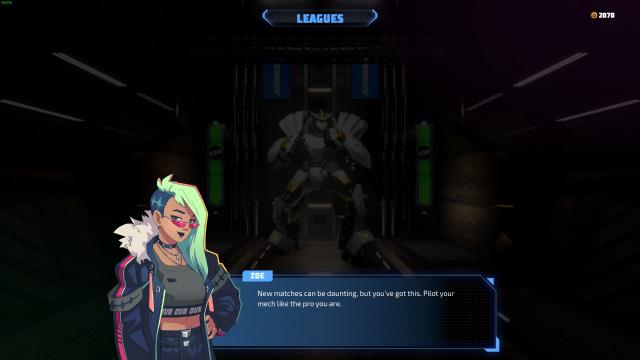
Outside of that, Zoe is responsible for setting up your matches in the league, which consist of 1v1s, 2v2s, and four-way-versus matches. You're given a selection of events to participate in, which grant points to use unlocking characters within this mode (the game's cast is locked while playing in league mode). Unlocking them also grants access to one of four color options for each limb, with the others having to be unlocked individually. The customization options are therefore minor at best, which leaves me wondering why they exist at all. Had there been more options and the ability to create truly unique designs for each character it would have greatly increased the game's replay value, but as it stands they really just seem more like badges for earning credits than anything that's truly customizable.
In closing, Override 2 leans so much into the realm of simplicity that it doesn't allow the player to really explore and have fun with its fighting system, so after just a few matches you've essentially experienced all the game has to offer. That's truly a shame because giant mechs can be fun. Ultraman's inclusion also makes me wonder who else could've been added to the game. Dairen'Oh? Jehuty? Voltron? Unfortunately, given how this game shaped up, it's unlikely any of them will ever happen.
VGChartz Verdict
5
Acceptable
This review is based on a digital copy of Override 2: Super Mech League for the PC, provided by the publisher.
























